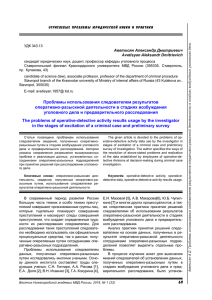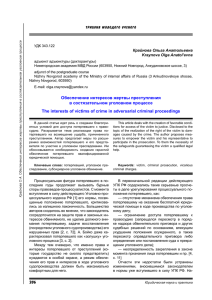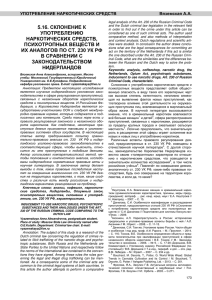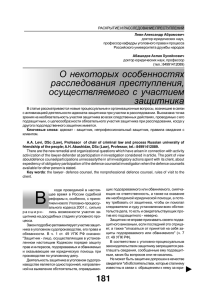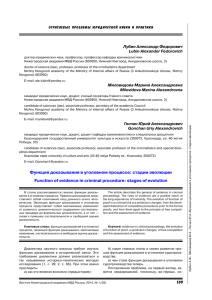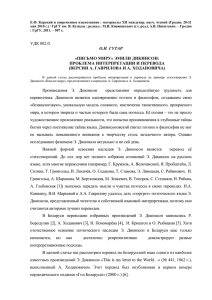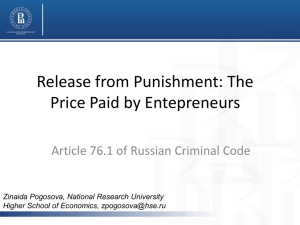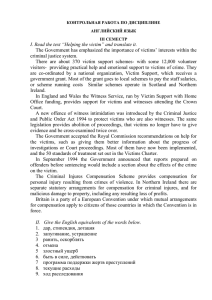
John Grisham He is an American novelist, lawyer, known for his best-selling legal thrillers. According to the American Academy of Achievement, Grisham has written 37 consecutive number-one fiction bestsellers, and his books have sold 300 million copies worldwide. Along with Tom Clancy and J. K. Rowling, Grisham is one of only three anglophone authors to have sold two million copies on the first printing. Biography John Grisham was born in 1955 in Arkansas. His father, a cotton farmer and itinerant construction worker moved the family frequently, from town to town throughout the Deep South, settling in Mississippi in 1967. Although Grisham’s parents lacked formal education, his mother encouraged him to read and insisted that he prepare himself for college. By his own account, he had no interest in writing until after he embarked on his professional career. For his first two years in college, Grisham drifted. He attended three different colleges before earning a degree. After abandoning a youthful dream of a professional baseball career, he settled down to study accounting and prepare for a career as a tax lawyer. While in law school, his interest shifted from tax law to criminal law and litigation (судопроизводство). After graduating from the University of Mississippi law school he established a small private legal practice. He was elected to the Mississippi House of Representatives in 1983. By his second term he held the vice chairmanship of the Apportionment and Elections Committee. In Mississippi, attorneys in private practice are sometimes called upon to appear as public defenders for indigent clients. In this way, Grisham received a valuable experience of the criminal justice system. Inspired by a case he observed in a Mississippi courthouse, Grisham decided to write a novel. For years, he arrived at his office at five o'clock in the morning, six days a week, to work on his first book, A Time to Kill. His manuscript was rejected by 28 publishers before he found an unknown publisher who was willing to print a short run. Without the benefit of a major publisher's marketing apparatus, he went directly to booksellers, encouraging them to stock his book. Although A Time to Kill sold a disappointing 5,000 copies, Grisham had already begun work on a second novel The Firm. At the same time, bored with the routine of the state capital and eager to spend more time with his family, he decided not to seek re-election to the state legislature. He closed his office and moved his family to Oxford, Mississippi, hoping to concentrate on his writing. At age 36, his career as a novelist bloomed when movie rights to The Firm were sold for a hefty price, even before the book had found a publisher. The Firm sold more than seven million copies and spent 47 weeks on The New York Times bestseller list. With the success of The Firm, John Grisham finally gave up his law practice to write full time. As of this writing, seven of his books were the bestselling novels of their respective years. No fewer than ten of Grisham's tales have been adapted for film and television, including The Firm, The Pelican Brief, The Client, The Rainmaker and the original screenplay The Gingerbread Man. Today, John Grisham, his wife, and their two children keep homes in Oxford, Mississippi. He is also a board member of the Innocence Project, an organization that promotes the use of DNA evidence to exonerate the wrongly convicted. Grisham's one nonfiction book to date, The Innocent Man (2006), recounted the real-life case of Ron Williamson, a former professional baseball player sentenced to death for a murder he did not commit. Williamson was eventually released, but his case exposed glaring inadequacies in the criminal justice system. A John Grisham Room is maintained in The Mississippi State University Libraries, Manuscript Division where materials generated during the author’s tenure as Mississippi State Representative are archived. Grisham is a zealous supporter to new writers providing scholarships and writers’ residencies in the University of Mississippi’s English Department. I’m going to introduce you two of his novels which I read during my bachelor studies The Client It is a legal thriller that revolves around an eleven-year-old boy named Mark Sway, who becomes entangled in a web of legal and criminal complications. It all starts with Mark and his younger brother Ricky sneaking some cigarettes in the woods near their trailer park when they witness the suicide of a lawyer, Jerome Clifford who knew some confidential information. He was the lawyer for Barry «The Blade» Muldanno, the mafia member who has been accused of murdering a U.S. senator. Before taking his own life Jerome confides in Mark about the location of the senator body. After that Ricky goes into shock and gets hospitalized while Mark is forcibly left with the knowledge of where the dead senator’s body is, making him the target of both the FBI and the mafia. Desperate, Mark hires lawyer Reggie Love with a $5 retainer fee. Although she doesn’t have children of her own, she is passionate about protecting kids who got in any kind of predicament so she instantly becomes engaged in Mark’s extraordinary and tricky case. And together they have to do everything they can to get out of a potentially lifethreatening situation. Mark is one of the most interesting child protagonists I’ve ever read about. He’s like an adult stuck in a kid’s body. He comes from the disadvantaged family and they live in the impoverished trailer park area. Even at a younger age he took the leading position in the family when he managed to save himself, his mom, and his younger brother from the abuse of his alcoholic father. He steals cigarettes from his mom, so he’s not the perfect kid by a long shot. But throughout the book, I was drawn to Mark’s grown-up-too-fast personality. I also like Reggie Love, the lawyer that Mark hires, is a strong woman with a troubling past. I love how she handles the people around her, and her interactions with the FBI agents, Mark’s mother, and the other lawyers showcase her confidence and expertise in her work, even though she’s only been a lawyer for four years. One of the most striking moments in the book is when Mark and Reggie form an unlikely bond as they work together to outmaneuver the powerful FBI forces pursuing them. Their friendship quickly developed when Mark visited Reggie’s home and got acquainted with Momma Love. Grisham tells the story from multiple perspectives, so knowing what Barry Muldanno knows and what Mark doesn’t know is kind of frightening and really ups the suspense. The legal aspects of the story are also pretty intense, and Grisham was able to elucidate the workings of the legal system and the criminal world in an interesting way. It delves into themes of justice, morality, relationship between parents and kids. All in all I can say the gripping plotline and well-crafted ending makes this a solid read. Additionally, there is a great deal of legal terminology and just vocabulary related the realm of law but it’s still not overcomplicated so I’d recommend to start with this book if you want to get acquainted with this genre Vocabulary obstruction of justice - the criminal offense of intentionally hindering or interfering with the processes of law which was used to threaten Mark But with the help of his lawyer he invoked the fifth amendment and refused to answer The Fifth Amendment (Amendment V) to the United States Constitution creates several constitutional rights, limiting governmental powers focusing on criminal procedures. It was ratified, along with nine other articles, in 1791 as part of the Bill of Rights. No person shall be held to answer for a capital, or otherwise infamous crime, unless on a presentment or indictment of a Grand Jury, except in cases arising in the land or naval forces, or in the Militia, when in actual service in time of War or public danger; nor shall any person be subject for the same offence to be twice put in jeopardy of life or limb; nor shall be compelled in any criminal case to be a witness against himself, nor be deprived of life, liberty, or property, without due process of law; nor shall private property be taken for public use, without just compensation. Testimony - spoken or written statements that something is true, especially those given in a law court показание, свидетельство Subpoena - a legal document ordering someone to appear in a law court; to order someone to go to a law court to answer questions повестка в суд, вызывать в суд Take into custody - the act of apprehending (especially apprehending a criminal); "the policeman on the beat got credit for the collar" заключать под стражу Warrant - an official document, signed by a judge or other person in authority, that gives the police permission to search someone's home, arrest a person, or take some other action ордер In 1994 a movie based on this novel was released. So I’d like to show you a scene from the movie. It’s the moment where Reggie Love character stands out. It should be pointed out that women working in this industry it was rare and uncommon so Reggie wasn’t taken seriously by her counterparts . Even Mark at their very first meeting didn’t expect to see a woman and thought that Reggie was a male name Theodore Boone: Kid Lawyer Initially it’s a novel for middle-grade children even judging by the name. It is the first book in a series about Theodore Boone. Grisham jokingly said in an interview that he wanted to catch up with Harry Potter, since his number one place was taken in the bestsellers. But I think it has proved that kids’ book can captivate adults too. The book is also about a boy, a son of lawyers and aspiring junior attorney at age 13, Theodore Boone. He is prodigy with a big heart and an even bigger sense of justice who brilliantly navigated the complexities of the justice system and court intricacies. The crux of the story He is obsessed with the law and can’t decide if he is going to be a great lawyer or judge. He lives with his parents. His Uncle Ike lives nearby who was a practicing lawyer before he was disbarred. Theo’s life runs on an exact routine every day from breakfast to bedtime with allotted times between school, his parents’ office and their home. At school although their classes are gender separated, Theo makes time to see his friend April during breaks and they chat over internet in their spare time. He has learnt kindness from his parents who also help others and make Theo part of the process, too. April is in the middle of a custody battle but doesn’t want to live with either parent. Theodore tries to comfort April and explain divorce custody laws to her. Theodore explains the law not only to April, but also to many of his classmates. One needs advice because his parents are behind in their mortgage payments and may lose their house. Another has a brother arrested for the possession of marijuana. Animal control has picked up the dog of a third classmate, and another may have information that could change the verdict in the biggest murder trial that has ever hit Theodore’s small town. In the Pete Duffy trial, Pete is accused of murdering his wife. Both the prosecution and defense lawyers in this case are good, but the prosecution’s case is based on circumstantial evidence. Pete had access to the murder scene, and he had a motive, but the defense is able to get the jury to doubt Pete’s guilt. In the middle of the trial, Theodore tracks down a classmate’s cousin, who saw Pete going into his house and leaving it at the time of the murder. The cousin won’t testify, though, because he is an illegal immigrant and doesn’t want to be sent back to El Salvador. Theodore must rely on the advice of Uncle Ike, and eventually both his parents, to figure out his next step. The whole Boone family finds a way to help the illegal immigrant work toward getting his legal residency and tells the Duffy trial’s judge what they know. John Grisham has certainly created a likeable character in Theo as the tagline of the book says «Half the man, twice the lawyer». He is similar to Mark Sway from the Client in a way that they’re both mature for their age and willfully or not become engaged in some kind of investigation. Since Theo’s professional parents have very busy and organized lives that have led to Theo becoming quite independent at a young age and acquired problem solving skills. As Theo learns to navigate these events, we can see how his character is being developed into a serious investigator for the future books to come. In that way, this first book in the series is there to build the background and introduce us to all players while we also have a murder mystery to solve. One of the scenes if when he does a presentation to his class about the court system and the case as he knows all the players from both sides and also gets permission for his class to attend the court during proceedings for a day. This is also the project we made at university He walked to the front of the class, pressed a key, and a large diagram appeared on the digital wide-screen whiteboard. “This is the main courtroom,” Theo said, in his best lawyer’s voice. He held a laser pointer with a red light and sort of waved it around the diagram. “At the top, in the center here, is the bench. That’s where the judge sits and controls the trial. Not sure why it’s called a bench. It’s more like a throne. But, anyway, we’ll stick with bench. The judge is Henry Gantry.” He punched a key, and a large formal photo of Judge Gantry appeared. Black robe, somber face. Theo shrank it, then dragged it up to the bench. With the judge in place, he continued, “Judge Gantry has been a judge for about twenty years and handles only criminal cases. He runs a tight courtroom and is well liked by most of the lawyers.” The laser pointer moved to the middle of the courtroom. “This is the defense table, where Mr. Duffy, the man accused of murder, will be seated.” Theo punched a key and a black-and-white photo, one taken from a newspaper, appeared. “This is Mr. Duffy. Age forty-nine, used to be married to Mrs. Duffy, who is now deceased, and as we all know, Mr. Duffy is accused of murdering her.” He shrank the photo and moved it to the defense table. “His lawyer is Clifford Nance, probably the top criminal defense lawyer in this part of the state.” Nance appeared in color, wearing a dark suit and a shifty smile. He had long, curly gray hair. His photo was reduced and placed next to his client’s. “Next to the defense table is the prosecution’s table. The lead prosecutor is Jack Hogan, who’s also known as the district attorney, or DA.” Hogan’s photo appeared for a few seconds before it was reduced and placed at the table next to the defense. Over here, next to the defense, is the jury box. It has fourteen chairs—twelve for the jurors and two for the alternates. Most states still use twelve-man juries, though different sizes are not unusual. Regardless of the number, the verdict has to be unanimous, at least in criminal cases. They pick alternates in case one of the twelve gets sick or excused or something. The jury was selected last week, so we won’t have to watch that. It’s pretty boring.” The laser pointer moved to a spot in front of the bench. Theo continued, “The court reporter sits here. She’ll have a machine that is called a stenograph. Sorta looks like a typewriter, but much different. Her job is to record every word that’s said during the trial. That might sound impossible, but she makes it look easy. Later, she’ll prepare what’s known as a transcript so that the lawyers and the judge will have a record of everything. Some transcripts have thousands of pages.” The laser pointer moved again. “Here, close to the court reporter and just down from the judge, is the witness chair. Each witness walks up here, is sworn to tell the truth, then takes a seat.” The laser pointer moved to the middle of the diagram. “This is called the bar. Again, don’t ask why. The bar is a wooden railing that separates the spectators from the trial area. There are ten rows of seats with an aisle down the middle. This is usually more than enough for the crowd, but this trial will be different.” The laser pointer moved to the rear of the courtroom. “Up here, above the last few rows, is the balcony where there are three long benches. We’re in the balcony, but don’t worry. We’ll be able to see and hear everything.” Theo began pacing. “Well, the State has the burden of proving guilt, so it must present its case first. First thing tomorrow morning, the prosecutor will walk to the jury box and address the jurors. This is called the opening statement. He’ll lay out his case. Then the defense lawyer will do the same. After that, the State will start calling witnesses. As you know, Mr. Duffy is presumed to be innocent, so the State must prove him guilty, and it must do so beyond a reasonable doubt. He claims he’s innocent, which actually in real life doesn’t happen very often. About eighty percent of those indicted for murder eventually plead guilty, because they are in fact guilty. The other twenty percent go to trial, and ninety percent of those are found guilty. So, it’s rare for a murder defendant to be found not guilty.”
